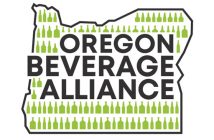(Mark Dean | Photo courtesy of Rosell Wealth Management)
How Marc Turned a Business Sale into a Financial Feast!
In the bustling world of entrepreneurship, few stories are as inspiring as that of Marc. Let’s call Marc’s company “Healthy Living Co.,” a fictitious name for a real success story. This fictionalized moniker represents Marc’s actual business, which includes a chain of restaurants known for their fresh, healthy ingredients.
He recently faced a monumental transition: a $10 million sale. But this isn’t just a story about business success; it’s also a masterclass in smart financial planning. Marc’s journey demonstrates how thoughtful preparation can lead to substantial tax savings — $2.1 million, to be exact.
So, what’s the secret sauce in Marc’s recipe for tax savings? Among the many tools in our toolbox, the Charitable Remainder Unitrust (CRUT) stood out as the perfect fit for his situation. This savvy tool helped minimize capital gains, income, and estate taxes. Here’s a breakdown of how Marc cooked up these savings:
1. Capital Gains Tax: A Healthy Cut
Marc kicked things off by establishing a CRUT and transferring 30% of his shares in Healthy Living Co. into the trust. The CRUT then sold this stake for $3 million. Since the trust is tax-exempt, it paid no capital gains tax on the sale. Meanwhile, Marc sold the remaining 70% of his shares outside the CRUT for $7 million, paying the usual 20% capital gains tax on this portion.
- The CRUT’s Portion: The CRUT’s tax-exempt status means no capital gains tax on the $3 million.
- Marc’s Portion: Marc faced $1.4 million in capital gains tax on the $7 million sale (20% of $7 million).
- Tax Savings: By using the CRUT, Marc avoided $600,000 in capital gains tax (20% of $3 million). That’s like slicing the tax pie and keeping a generous serving for yourself!
2. Income Tax: A Smooth Spread
The CRUT doesn’t just save on capital gains taxes; it also pays Marc a percentage of the trust’s value annually, typically between 5% and 7%. This means Marc receives an income ranging from $150,000 to $210,000 per year. These distributions are subject to income tax, but spreading them out over time helps keep Marc in a lower tax bracket, compared to a single, hefty lump-sum payment. It’s like spreading peanut butter on toast — more evenly distributed, less sticky mess!
3. Charitable Deduction: A Generous Dollop
As if the tax benefits weren’t sweet enough, the CRUT also offers Marc a charitable deduction based on the present value of the remainder interest that will eventually be donated to charity. The funds within the CRUT are invested for long-term growth, providing Marc with an annual income stream of 5-7%, which amounts to $150,000-$210,000 each year. This income stream continues for Marc and his spouse’s lifetimes, and upon their passing, the remaining assets in the CRUT will go to the charities of their choosing.
To qualify for the CRUT tax deduction, several key factors are considered to calculate the estimated remainder interest. These include the expected duration of the trust, the annual payout rate, and the value of the assets gifted to the trust. The IRS tables, which account for life expectancy and other factors, are used to make these calculations.
For Marc, this meticulous planning results in significant income tax savings. As the remainder interest was valued at $1 million and he is in a 37% income tax bracket, Marc would save $370,000 in income taxes ($1 million x 37%). It’s like a dollop of whipped cream on top of your tax savings sundae, sweetening the deal even further while supporting causes close to his heart.
4. Estate Tax: The Cherry on Top
Finally, by placing 30% of his shares into the CRUT, Marc effectively removes $3 million from his taxable estate, leading to an additional estate tax saving of $1.2 million (assuming a 40% estate tax rate). This maneuver is particularly timely given the sunsetting of the current federal estate tax exemption. As the exemption amount is set to decrease, potentially exposing more estates to taxation, Marc’s proactive planning ensures his estate is shielded from additional tax liabilities. This strategy not only safeguards his wealth but also preserves his financial legacy, allowing more of his assets to benefit his chosen heirs and charitable causes. It’s the cherry on top, solidifying Marc’s careful financial planning and maximizing the impact of his life’s work.
Tallying the Savings
Let’s crunch the numbers to see the total savings Marc and his family enjoyed by planning ahead:
- $600,000 — Capital Gains Tax Savings (20% of $3 million)
- $370,000 — Income Tax Savings through Charitable Deduction (assuming $1 million present value of remainder interest and 37% tax bracket)
- $1,200,000 — Estate Tax Savings (assuming 40% estate tax rate on $3 million)
- $2.17 million — TOTAL TAX SAVINGS
Marc’s story is a shining example of how a little foresight can lead to significant financial benefits. By being one of the 6% of business owners who plan their company sale two or more years in advance, Marc not only maximized his financial gains but also contributed to a charitable cause — a win-win situation. It’s like finding a golden ticket in your financial planning chocolate bar!
So, what’s the takeaway here? For entrepreneurs considering a sale, it’s not just about getting the best price; it’s also about keeping as much of that price as possible. And if you can do a bit of good in the world while you’re at it, well, that’s just the sprinkles on your financial donut.
In Marc’s case, the CRUT wasn’t just a financial instrument; it was a strategic partner in achieving a smooth and profitable business exit. And remember, in the world of business and taxes, sometimes the best moves are those made with a bit of foresight and a lot of planning. So, when it comes to selling your business, think ahead — your future self (and your tax bill) will thank you.
At Rosell Wealth Management, we’re here to help you make the most of your business success. Our 6% Advantage is all about smart strategies that can potentially save you a significant amount in taxes when you’re preparing to sell your company. Whether you’re curious about CRUTs or other advanced financial tools, our team is ready to guide you through the process. Reach out to us to learn how we can help you navigate your business sale with confidence and keep more of what you’ve worked so hard to build. Let’s turn your next big step into a major win
David Rosell is the president of Rosell Wealth Management in Bend. RosellWealthManagement.com. He is the author of three books. Find David’s books at local bookstores, Amazon, Audible as well as Redmond Airport. Investment advisory services offered through Valmark Advisers, Inc. an SEC Registered Investment Advisor Securities offered through Valmark Securities, Inc. Member FINRA, SIPC 130 Springside Drive, Ste 300 Akron, Ohio 44333-2431. (800) 765-5201. Rosell Wealth Management is a separate entity from Valmark Securities, Inc. and Valmark Advisers, Inc.





